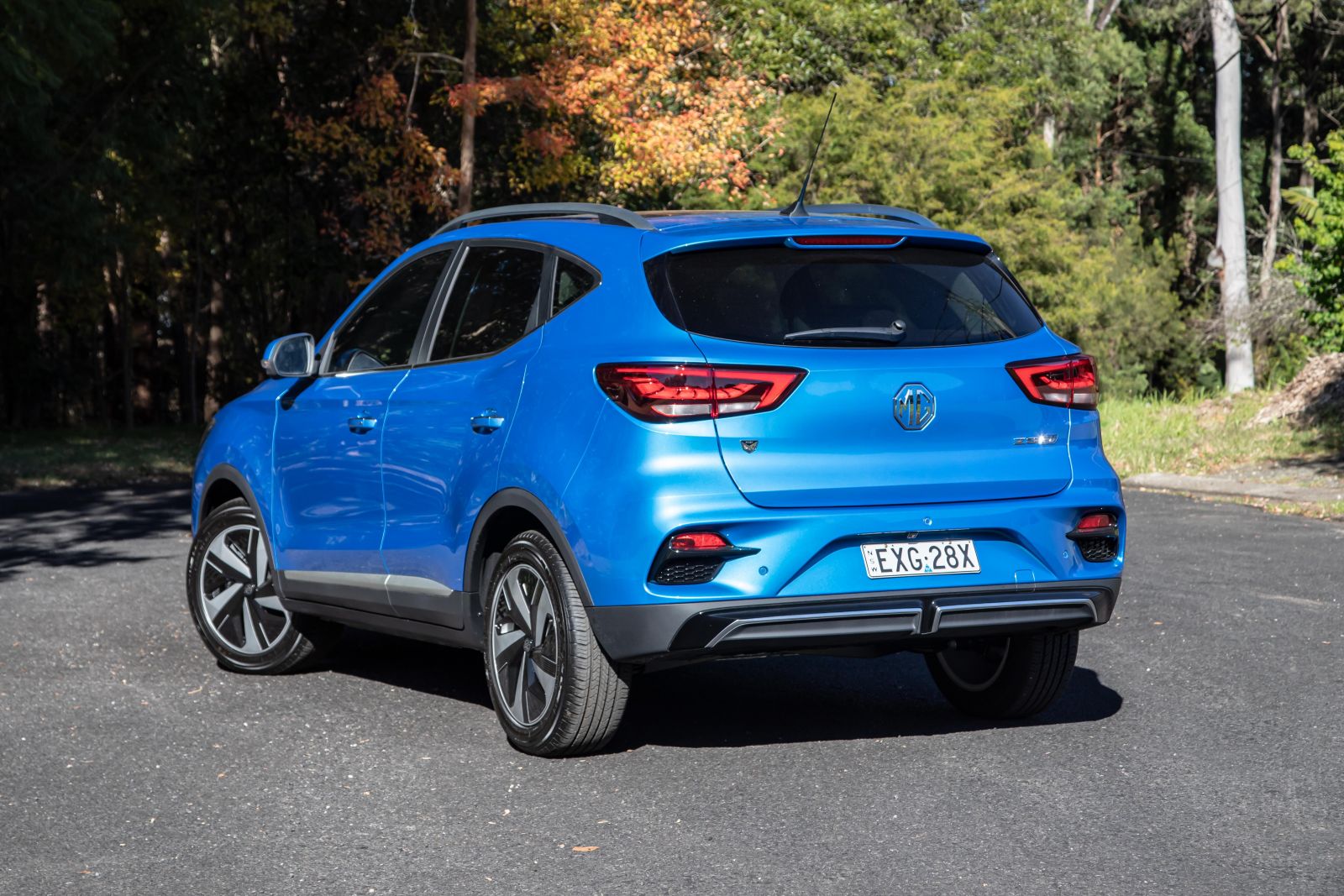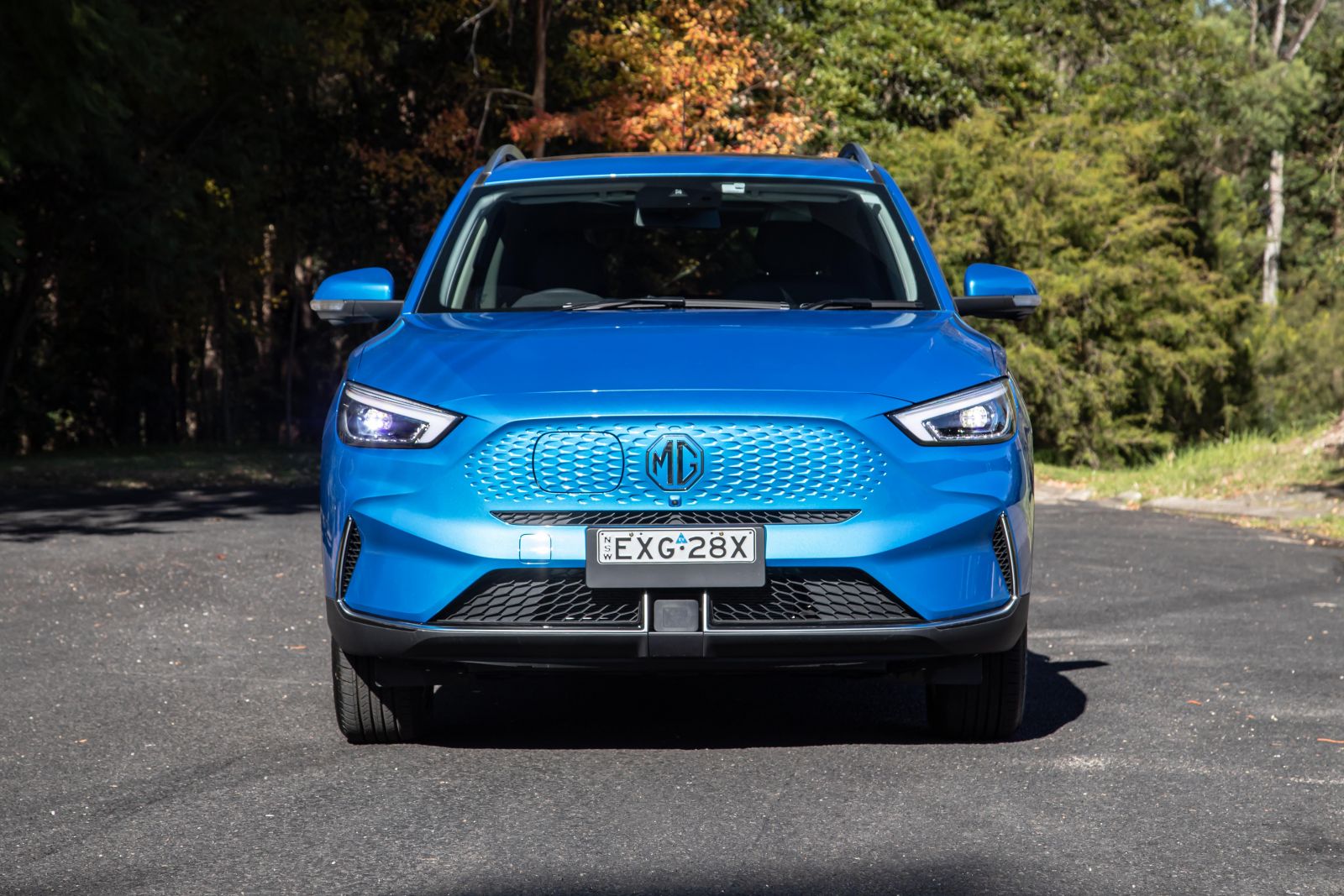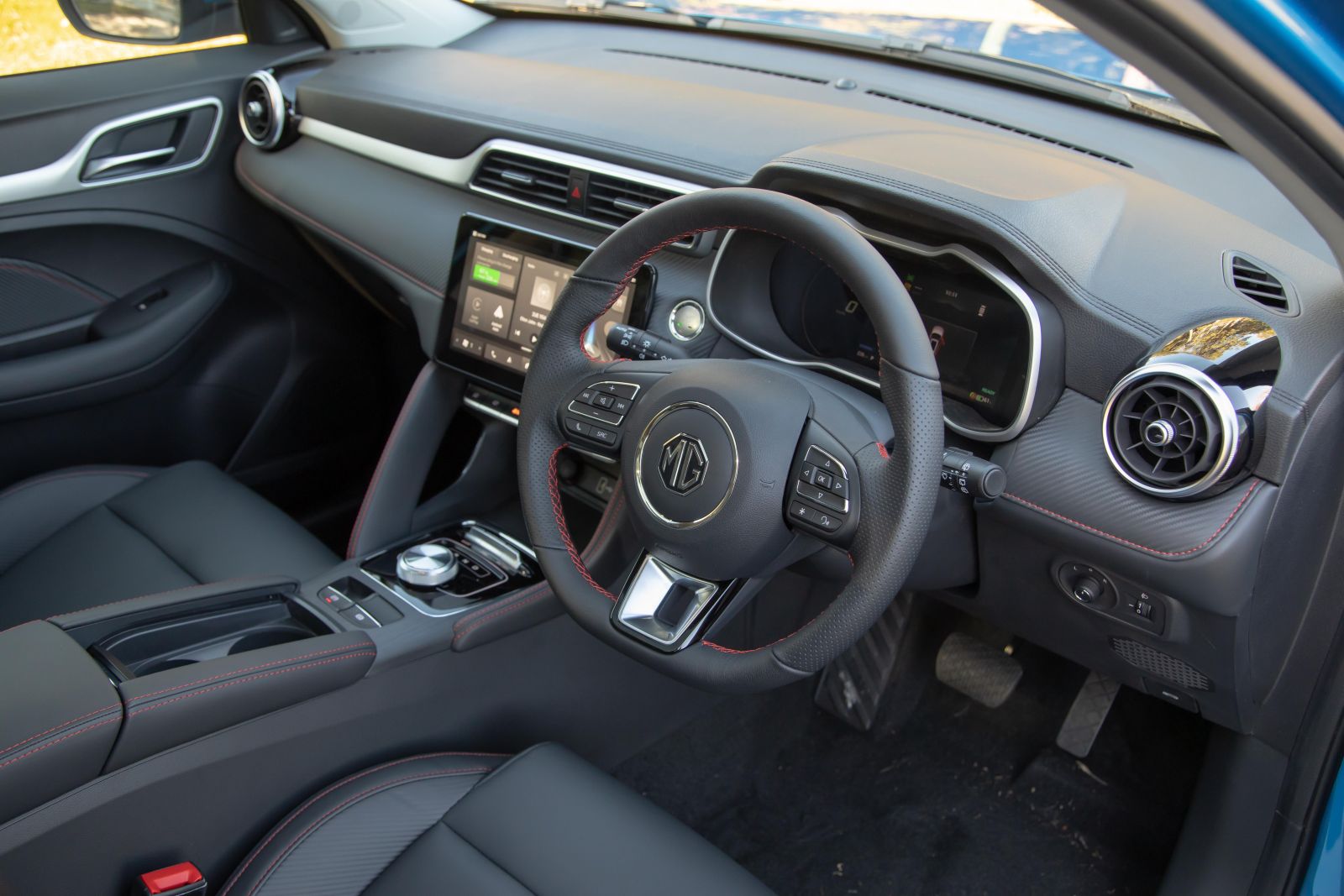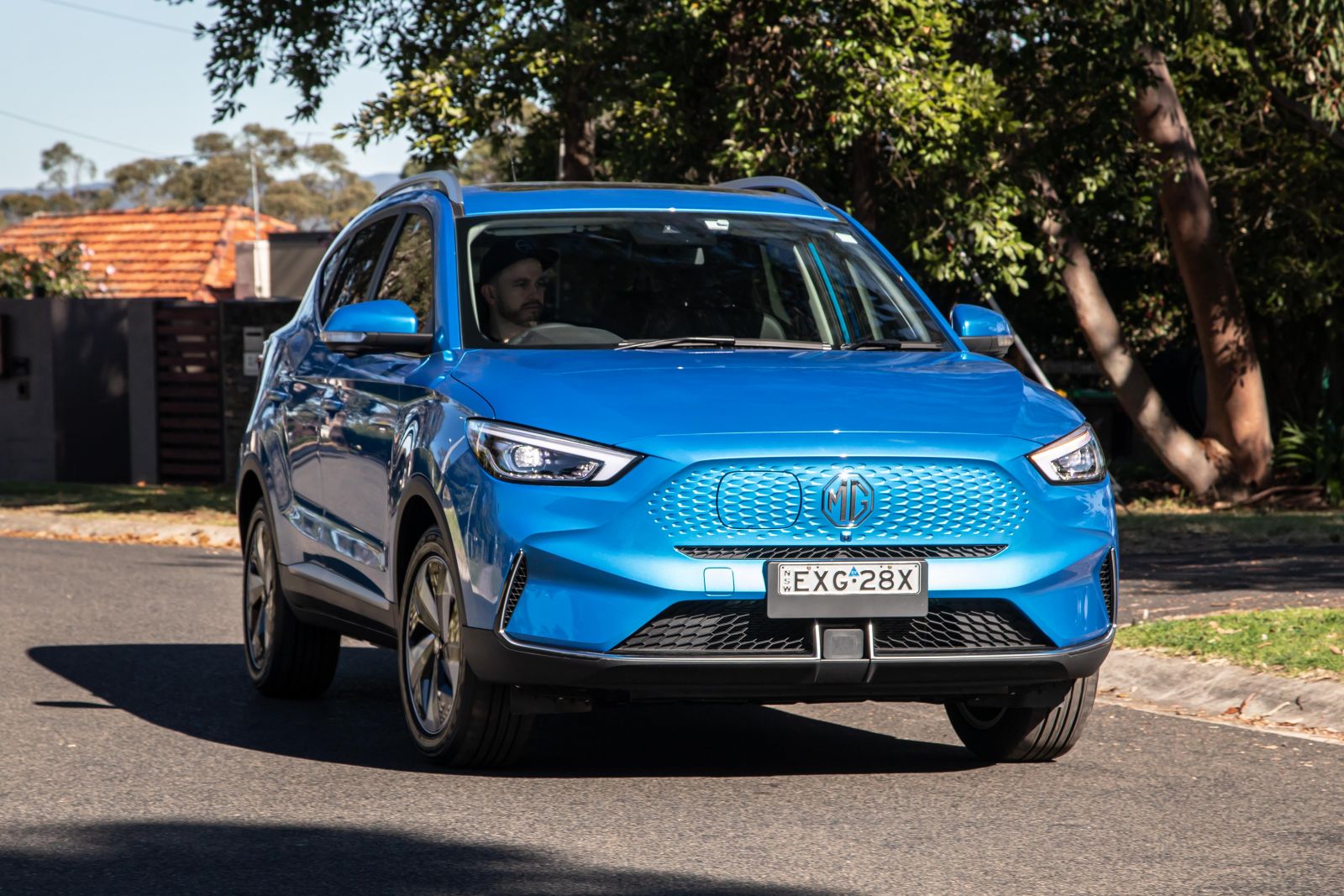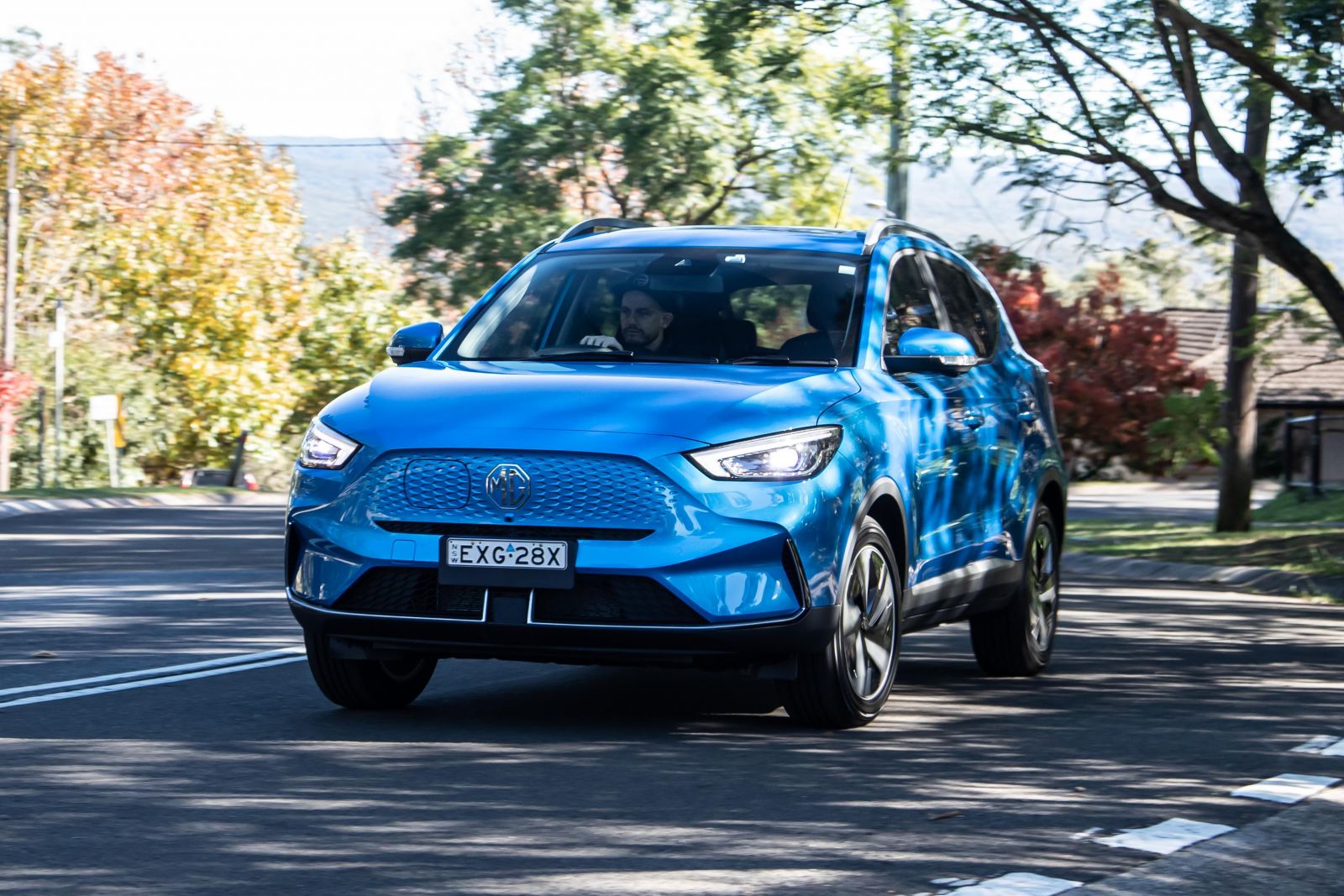Australian electric car buyers seem to still think they need enough range to drive from Sydney to Melbourne on a single charge.
That’s a long way from being a reality, but there are more and more brands offering EVs with longer electric driving range these days, and some brands are even upgrading older models with improved distance by way of larger battery packs.
The prime example is this car right here; the 2023 MG ZS EV.
This Chinese-made small SUV made a name for itself as being the most affordable electric car on the market for a while there, but now the brand has decided to add a more expensive model for people who want more driving range.
As such, it has a battery with 45 per cent more capacity, but it doesn’t have 45 per cent more range than the circa-$11K cheaper model. The increase is a not insubstantial 37.5 per cent, or 440km of range compared to the more affordable version’s 320km.
You’ll find more detail on the stuff under the surface below, but the big question here is whether it’s worth the extra money, and whether it can actually do 440km on a charge.
Oh, and whether you’d actually buy this updated electric MG when the all-new MG4 offers more range for less money – read on to find out.
How much does the MG ZS EV Long Range cost?
The MG ZS EV Long Range is the top model in a line-up of three, and it’s the most expensive one.
It’s probably worth reinforcing that you don’t get any extra equipment for your $7000 extra investment over the Standard Range Essence, but you are getting a larger battery and more driving range. Dover White or Pebble Black are no-cost paint options, while the signature Brighton Blue finish seen here, and also Sloane Silver or Diamond Red, add $700.
As for rivals, when you’re talking mid-fifties pricing for an EV, there are some alternatives you could also be looking at. The BYD Atto 3 is the most obvious alternative, with list pricing from $48,011 for the Standard Range (345km WLTP) or $51,011 for the Extended Range (420km WLTP).
The Hyundai Kona Electric Elite Standard Range has just 305km of range (WLTP) but costs a similar amount ($54,500 MSRP), while the Extended Range model boasts 484km (WLTP) and costs $60,500 – an all-new model is also due to lob before the end of the year. You can’t get a Kia Niro EV at that kind of price, sadly, with the new-gen model starting at $65,300 (455km WLTP).
However the main rival MG ZS EV customers should be looking at is arguably the upcoming MG4 electric hatch, which is set to start from $44,990 before on-road costs, with a longer WLTP claimed range for the base model than this long-range version (450km WLTP). The long-range version, at $55,990 plus on-roads, boasts a claimed range of 530km WLTP.
2023 MG ZS EV pricing:
- MG ZS EV Standard Range Excite: $44,990 drive-away (320km WLTP)
- MG ZS EV Standard Range Essence: $48,990 drive-away (320km WLTP)
- MG ZS EV Long Range: $55,990 drive-away (440km WLTP)
Prices exclude on-road costs
What is the MG ZS EV Long Range like on the inside?
It’s no different to the other ZS EV models, and while it is not the last word in quality and material finishes, it is a pretty nice place to be.
There are soft padded sections where your knees might rest against the centre console, as well as along the dashboard, and where your elbows rest.
The chequered, textured finish with red stitching really does add something to the cabin, and that red stitching continues onto the seats and the centre console area as well. It’s also on the steering wheel. Look, it’s not classy or overly plush, but at least it’s not the usual festival of black plastic.
Storage is good, too. There is a pair of cupholders between the seats with a retractable cover, a wireless phone charger in front of the shifter, a small centre console bin as well, and big door pockets with bottle holders, too. Plus, there’s a decent size glovebox and there’s a sunglass holder, as well.
I like the fact the gear selector has stoppers at the end, so you aren’t just eternally twisting it (as you do in some GWM products).
There are also three buttons ahead of the shifter for a shortcut to see your battery status, or adjust the KERS (kinetic energy recovery system – which alters the regen braking response), and there’s also a drive-mode button (Eco, Normal and Sport).
The media interface isn’t as intuitive as it could be. There is a bunch of stuff that is seemingly hidden behind menus, and while I’m sure you get used to interacting with the controls, it has some frustrating elements to it.
However, I like that below the screen there are climate control and fan toggles, plus front and rear demister buttons. However, you have to go through the screen to activate recirc. For media, there’s also a volume toggle and a home button in that section.
Some buyers may find the lack of reach adjustment for the steering wheel to be a problem – I found it frustrating as I couldn’t get into a properly comfortable position.
Others may lament the fact the indicator and wiper stalks are “the wrong way around”, being that the left one is the indicator lever.
One thing that really makes this cabin feel a bit special is the huge sunroof, with the front half including an opening section, and a very large rear section that goes all the way back over the head-rests of the rear seat .
Speaking of the second-row, I managed to sit in there behind my own driving position (I’m 182cm or 6’0”) with enough knee, foot and head space to be comfortable.
There’s an almost entirely flat floor to allow for better foot space for occupants, and you could fit three adults across in a squeeze, too.
In terms of amenities, there are two map pockets, bottle holders in the doors, soft elbow pads on the door cards, directional air vents, and USB-A and USB-C charge points. The only thing it’s missing is a fold-down armrest with cupholders.
Fitting a child seat is easy enough as there are outboard ISOFIX points and three top-tether attachment hooks – though they are right down the bottom of the seatbacks, which is unusual.
Child load-in access to the cabin is decent, too – the doors open reasonably wide, and there’s a good amount of headroom for putting a kid in and out of their seat. My daughter loved the view out the sunroof, too.
Boot space is decent but not groundbreaking at 359 litres, although there is a dual-floor layout with a secondary section which houses the charge cable and tyre repair kit – there’s no spare here, as is the expectation for EVs.
There are also small netted sections at the edges of the cargo space, behind the wheel arches, to allow for a little bit of extra storage space – those are good for loose items from the shops, like those 2L milk bottles that always seem to fall over!
What’s under the bonnet?
This version comes with the larger 72.6kWh liquid-cooled lithium-ion battery pack, which is teamed to a front-axle synchronous electric motor producing 115kW of power and 280Nm of torque.
The power output is a little less than the cheaper versions of this EV (130kW), and it’s slower from 0-100km/h, too, with the Long Range model claiming 8.5 seconds, as opposed to 8.2s for the cheaper versions.
It doesn’t weigh that much more than the shorter-range models either, with just 10kg splitting the 1620kg kerb mass compared to the middle-grade model.
It is capable of DC fast-charging at a maximum rate of 80kW, and MG claims you should be able to do 0-80 per cent from a 50kW fast charger in 63 mins.
The AC charging max is 11kW, and the brand says that means a full recharge time of eight hours if you have an 11kW wallbox. A 7kW box should result in a charge time closer to 11 or 12 hours.
How does the MG ZS EV Long Range drive?
Not very differently to the other versions, and that is to say that for the most part it’s reasonably livable – but it’s hardly exciting to drive.
If that doesn’t matter to you, then it should be okay. But for the keener customer, there might be better options.
The steering is mostly good, as it’s quite direct in the way that it responds to inputs, but it also has this odd electric steering feel to it where, if you’re gently applying lock at really low speeds – say in a traffic jam or something like that – you will notice it feels ‘sticky’ at times.
The suspension (Macpherson front, torsion beam rear) feels a little bit firm in terms of the springs, and you will primarily notice that at the back of the car, it’s a little bit bouncier than the front.
Indeed, at times over larger undulations in the road surface, the rear-end of the ZS would rebound so severely that the front would also bounce, and that could lead to a slight surging feel – as though a lot of the weight had been taken off the front axle, causing it to lose some degree of traction – even when the cruise control was on.
Braking response and pedal feel are good, although the regenerative braking – even in its most aggressive KERS mode – is not like some other EVs with their ‘single pedal’ driving responsiveness. It will slow you to a crawl, but not to a halt.
It’s generally pretty quiet in the cabin, though you can hear a bit of the motor whirring away as you build pace, but it’s genuinely quite refined. There’s not too much road noise to contend with either.
One annoying element of the drive experience is that the surround-view camera system (which isn’t as high-resolution as many others out there) will come on automatically at lower speeds, and that can be a little bit frustrating if you are at an intersection and trying to figure out where you are supposed to go next, or maybe you just want to change the song or something like that…
The powertrain is definitely perky enough for this application, and as you would expect being an EV it has that instant torque feeling.
I spent most of my time driving in Eco mode in order to try and eke out as much of the battery range as I could possibly get. But even in this setting throttle response was very good, and it really moves if you need it to. The front tyres can screech from a standstill under hard throttle.
All in all though, it’s a pretty easy EV to live with.
So, did I get the claimed 440km out of a charge? No. But it was close…
Over my time with the MG ZS EV Long Range, I drove a total of 386.6 kilometres. When I completed my week with the car, it had just 16 kilometres of driving range (or 4.0 per cent of the battery charge) remaining.
Claimed energy consumption is 17.7kWh/100km on the combined cycle for this car.
Over my week of testing, I achieved a figure of 17.1kWh/100km – yes, better than the official figure – with an average speed of 50km/h during my week-long loan which entailed 7 hours 42 minutes of driving.
Obviously you might see even better than that, if you are using the regenerative braking more and doing more stop-start driving.
My testing involved some of that, and on my last stint I was conscious of running out of range before I got to the return destination, so I was a bit more cautious.
Lucky, because once the battery got down to around 5.0 per cent remaining, it cut power to a lower level – the turtle symbol came up on the dashboard, and I felt it sap the energy from the powertrain.
I think it’s safe to surmise that I would have just ticked over 400km of driving had I kept going, and while that is certainly a usable real-world amount of EV driving range, it is still 10 per cent short of the claimed figure.
What do you get?
As mentioned above, you don’t get any notable extra gear if you choose the Long Range over the Essence grade – but it’s probably helpful to see what is on offer across the line-up.
ZS EV Excite highlights:
- 51.1kWh battery pack – 320km WLTP range
- 17-inch alloy wheels
- Automatic LED headlights
- 7.0-inch digital instrument cluster
- 10-inch touchscreen infotainment system
- Apple CarPlay, Android Auto (wired)
- Satellite navigation
- DAB+ digital radio
- 360-degree cameras
- Rear parking sensors
- iSmart app connectivity
- Leather-wrapped steering wheel
- Cloth upholstery with houndstooth pattern
- Keyless entry and start
- Tyre pressure monitoring
- Vehicle-to-load (V2L) charging
- 4-speaker sound system
ZS EV Essence adds:
- 6-speaker sound system
- 6-way power driver’s seat
- Wireless phone charger
- Leatherette upholstery
- Heated front seats
- Power-folding exterior mirrors
- Panoramic sunroof
- Rain-sensing wipers
- Sunglass holder
- Front seatback map pockets
- Roof rails
- Blind-spot monitoring
- Rear cross-traffic alert
ZS EV Long Range adds:
- 72.6kWh battery pack – 440km WLTP range
- Rear privacy glass
Is the MG ZS EV Long Range safe?
The pre-facelift version of the MG ZS EV was awarded a five-star ANCAP safety rating in 2019.
Where it achieved an adult occupant protection score of 90 per cent, a child occupant protection score of 84 per cent, a vulnerable road user protection score of 64 per cent, and a safety assist score of 71 per cent.
ANCAP, however, now labels that the “Old Model”, and despite suggestions from the brand that it was working with the safety watchdog to secure an updated rating, this facelift model – officially at least – is currently unrated.
Standard safety equipment includes:
- 6 airbags
- Autonomous emergency braking
- Pedestrian, Cyclist detection
- Lane-keep assist
- Adaptive cruise control with intelligent cruise assist
- Traffic sign recognition
- Surround-view camera
Essence and Long Range add:
- Blind-spot monitoring
- Rear cross-traffic alert
How much does the MG ZS EV Long Range cost to run?
The MG range is covered by a seven-year, unlimited kilometre warranty, which applies to the car and the battery.
Some other brands offer eight years of warranty for their batteries. But the MG range also gets roadside assistance included for the duration of the warranty plan, at no extra cost. Service intervals are lengthy, because it’s an EV and it shouldn’t need maintenance as regularly as an ICE car. They are set at 24 months/40,000km, which is extensive.
Get this – the capped-price servicing program for the MG ZS EV (because of those intervals) spans 14 years or 280,000km! And if you’re curious, the average biennial service cost over that period is $630, or $315 per year or for every 20,000km. That’s pretty cost-effective motoring.
When it comes to efficiency and charging costs, the official combined cycle figure for the ZS EV is 17.7kWh per 100km. For a cost calculation, from a standard electricity supply (based on NSW electricity average costs of 27.74c per kWh) to fill up the battery to its full capacity of 72.6kWh, it’ll cost about $20.13.
Of course, if you have a solar array and charge at home, it may not cost you a cent, or if you have a sweet off-peak price it might cost a fraction of that to fill the batteries back up overnight.
MG offers its own home charging options for installation, including a 7kW wallbox ($1990) or 11kW wallbox ($2090 – requires three-phase power), but you’ll also need to pay for the installation.
CarExpert’s Take on the MG ZS EV Long Range
While it may feel like too little, too late for this updated version of the MG ZS EV with the Long Range battery, there will still be buyers out there for this vehicle, which is arguably more attractive now than ever thanks to the longer claimed battery range.
Nonetheless, MG’s EV range is about to expand, with the incoming MG4 offering more advanced tech and a much lower price for more driving range.
Some buyers may still need the extra practicality or ride height of the ZS EV and for them, this remains a great choice. Otherwise, I reckon you may be better off choosing the MG4 if you want an attainable EV with long driving range.
Click the images for the full gallery
MORE: Everything MG ZS EV

